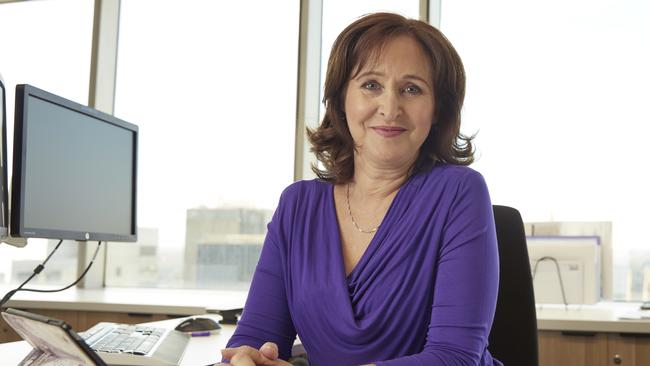Certainty needed in climate policy, says HESTA
The boss of $64bn industry fund HESTA says lack of short, medium and long-term emissions targets is hindering investment in local renewable infrastructure.

Business
Don't miss out on the headlines from Business. Followed categories will be added to My News.
One of the nation’s top industry funds is investing three times as much money in renewable infrastructure assets offshore as in Australia, due to the nation’s “ad hoc” approach to climate policy.
Debby Blakey, chief executive of the $64bn fund HESTA, said that the lack of short, medium and long-term emissions targets was hindering investment and undermining the confidence of investors to deploy more long-term capital towards local renewable infrastructure.
“Investment capital goes to where there is certainty and stability, and Australia’s ad hoc policy approach is not helping to encourage investment nor foster innovation,” Ms Blakey said in a speech to the global Race to Zero summit, held virtually on Thursday evening.
“We want to invest more in Australian renewables, but the current policy framework means for every $1 we commit to Australian renewable infrastructure assets, we have $3 invested overseas.”
While the HESTA chief spoke from an investor perspective, ANZ Bank chief executive Shayne Elliott told a separate environmental, social and governance conference hosted by Credit Suisse that there was “almost too much money” available for green opportunities.
Mr Elliott said what was really needed in “one of the biggest super-cycles in our lifetime” was money to remove bottlenecks by taking a different approach to risk.
This would “very quickly” create opportunities for private capital to do its work.
“Clearly, one of the risks at the moment because there’s almost too much money is greenwashing, trying to cobble things together just to give it some sense of greenness to satisfy that massive level of demand,” Mr Elliott said.
“I do worry about this, so the onus is on a lot of us to keep our standards high, and making sure we have an agreement across the economy and across the sector about the taxonomy and definitions to keep standards high.”
A global debate and position-taking is underway as the world prepares for the crucial COP26 United Nations climate conference in Glasgow, starting at the end of this month.
Negotiations about a more ambitious cut in emissions are continuing with the Nationals, but Scott Morrison is considered likely to commit to net-zero emissions by 2050, in line with the Paris Agreement.
Ms Blakey, however, said that Australia risked being left behind as global capital markets poured trillions of dollars into net-zero investment opportunities.
She said markets were proactively weighing up climate change risks when making big investments, and Australia could miss if it were seen as too slow to decarbonise.
The HESTA boss called on the government not only to legislate a 2050 net-zero target but also clear steps to achieve the target.
“Those countries and companies that set the right targets and clear strategies to achieve them will be at the front of the investment-capital queue,” she said.
“Global capital is sending clear signals that Australia is only just starting to heed.
“The costs of being a global laggard on climate change are only going to grow as pressure for action increases.
“As Australian super funds are invested across the Australian economy, this will impact our members’ investments and their financial futures.”
Meanwhile, on the topic of the prudential regulator’s climate vulnerability assessments now underway, Mr Elliott said the task was a lot more complicated than people might expect because there was no agreement on the best approach to modelling.
Banks, he said, were only at the “very, very early stages of this”.
“It sounds like we should be able to run our loan portfolios through various scenarios, but it actually gets to the heart of our business,” he said.
“There’s a view that we’re in the business of asset-based lending, but we’re actually in the business of cashflow lending – with a home loan, which is the single largest asset on a bank’s balance sheet, we’re concerned about your ability to generate income so you can repay it, and the home itself is secondary as security.
“An insurer looks at it very differently.
If you insure the house, you’re asked where it is, what side of the street, what’s it made of, what kind of roof. It’s totally different.”
On top of that, the average life of a home loan in Australia was 4.5 years, so there was no need for the lender to develop a 30-year view of what might happen to the climate in the area where the house happened to be located.
In fact, it would be “pointless” to undertake such an exercise.
Mr Elliott said bank balance sheets changed at a “rapid” rate, much more so than before.
“So sitting there and trying to develop 20 and 30-year scenarios is intellectually interesting but really devilishly difficult,” he said.
“It’s a little bit more complicated than it might first appear.”
Originally published as Certainty needed in climate policy, says HESTA



